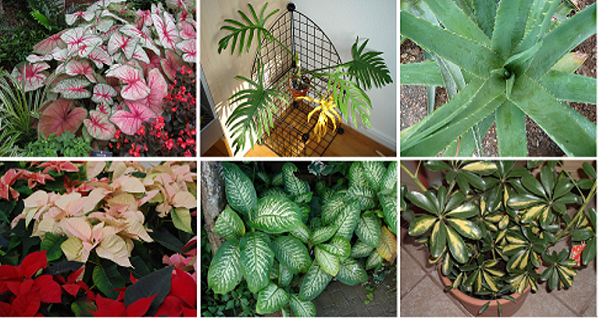White Snakeroot (Ageratina Altissima)
First, you should know that this poisonous plant is native to North America. White snakeroot is a plant with flat-topped clusters of small white flowers, containing a toxic alcohol, called trematol. This herb is responsible for the death of Nancy Hawks, Abraham Lincoln’s mother. The worst thing about white snakeroot is that you don’t have to ingest it directly to be poisoned, Nancy died from drinking the milk of a cow that consumed this plant before that. This means that even the meat and milk from poisoned cattle can have deadly consequences if ingested. The most common symptoms of white snakeroot “milk poisoning” include loss of appetite, nausea, weakness, abdominal discomfort, red tongue, abnormal acidity of the blood, and eventually death. So, all farmers are warned about the toxicity of this deadly plant and they all try to remove this dangerous plant from their pastures.
Castor Bean (Ricinus Communis)
This type of plant is usually grown as an ornamental plant due to its attractive looks and it’s native to Africa. You’ve probably heard about castor oil, right? The castor oil is produced from processed seeds, but before processing the beans contain a poison called ricin which is extremely deadly even in very small amounts. You should be very careful, because just one or two seeds are enough to kill a child while just eight seeds can easily kill an adult person. Ricin prevents the synthesis of proteins within cells and can cause severe vomiting, diarrhea, seizures, and lead to death.
Rosary Pea (Abrus Precatorius)
This her is also known as jequirity beans. It contains abrin, which is an extremely deadly ribosome-inhibiting protein. You should know that this plant is native to tropical areas and is often used in jewelry and prayer rosaries. It’s kind of weird that if the seeds aren’t damaged they are not poisonous, but if they are somehow scratched, broken, or chewed – they can can be deadly. Just three micrograms of abrin are enough to kill an adult, which is less than the amount of poison in one seed, and it is said that numerous jewelry makers have poisoned themselves and even died after accidentally puncturing their fingers while working with the seeds. And, just like ricin, abrin prevents protein synthesis within cells and can cause organ failure within four days.
Click ‘Next Page (>)’ to keep reading and don’t forget to SHARE with your Facebook friends

